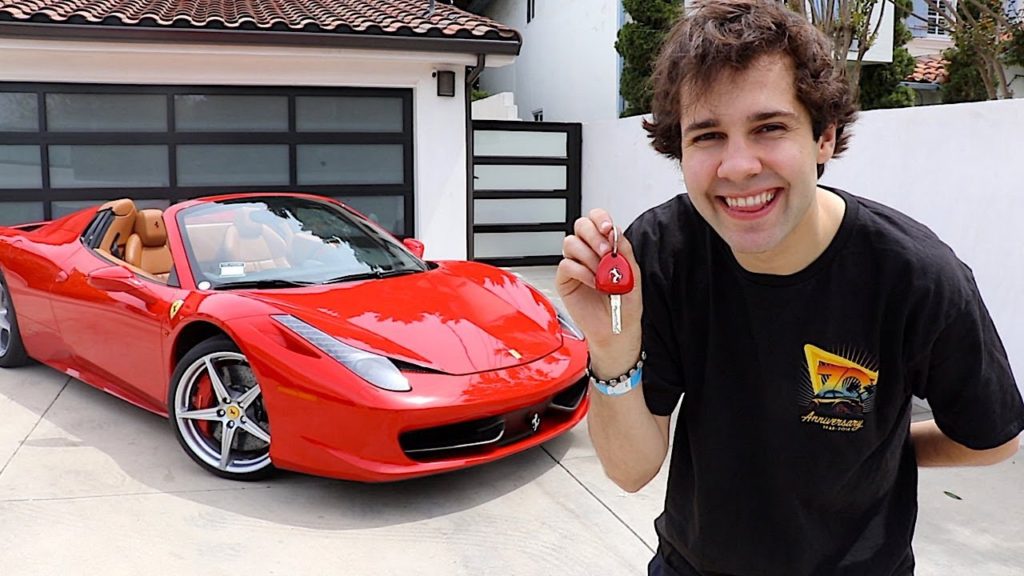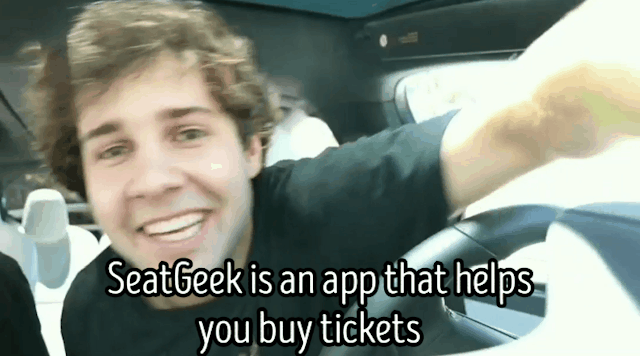About two months ago I occasionally learned that one of my favorite bands was going to give a concert in Los Angeles, I was quite thrilled and planned on booking a ticket immediately. I vaguely remembered that someone had told me about a ticket app called SeatGeek, so I downloaded it and searched for the concert tickets. Suddenly it occurred to me that SeatGeek is the ticket company that sponsored David Dobrik, a YouTuber who records his crazy and hilarious daily life, to go to Las Vegas and to surprise his friends with brand new cars as presents. I was really in a great mood because I also remembered that David had a promotion code that could save me $20. To be honest, I didn’t expect that I could remember all these details from a YouTube video. When I tried to find the exact promotion code, I discovered that SeatGeek was a quite a frequently-mentioned apps in Dobrik’ s videos, which might explain why people who only watched 3 or 4 of his videos and didn’t even follow him on YouTube, like me, could remember the name of the ticket company. It turned out SeatGeek had successfully made its name stick in its potential consumers’ minds through cooperating with Dobrik.

As marketers all began to realize that influencers’ recommendations were much more effective than stories told by the brand, some of them also found that simply paying numerous influencers to post similar content was not enough, and some influencers were also worried about the tricky balance between promoting sponsored products and maintaining followers’ trust. In the case of Dobrik and SeatGeek, it seemed that a more effective way of influencer marketing that provides long-term benefits could be developed. Instead of directly promoting SeatGeek in his video, Dobrik presented SeatGeek as a nice sponsor who made all his unexpected and exciting stories happen, which was consistent with his usual style. And SeatGeek didn’t just appear once or twice, actually, it had sponsored over 20 Dobrik’s videos. As Ian Borthwick, the influencer marketing director of SeatGeek said, when an ad was repeated multiple times, the audience was more likely to remember them, and the influencer also felt more comfortable doing it. The decision made by SeatGeek to establish a long-term partnership and give the influencer much more creative control proved to be quite a success.

While the “more than a one-off deal” strategy worked well in Dobrik and SeatGeek’s cooperation, from my point of view, it might not be universally applicable. Numerous cases have proved the effectiveness of repeated advertisements in making people remember, including my personal experience mentioned above, but without the interesting plots created by Dobrik, the repetition of SeatGeek might seem annoying and just leave a negative impression. Even if the brand is lucky enough to find a creative influencer who could consistently present similar content without making people feel bored, the outcomes might still vary with brands.
For ticket companies like SeatGeek, the main marketing purpose should be converting viewers into potential customers, since most people won’t buy concert tickets immediately after watching an ad — they only buy tickets when they need to. Therefore, it is important to make “SeatGeek” the first name coming into consumers’ minds at this moment, which exactly the repeating ads’ strengths. However, for products that are more of the “buy-by-impulse” type, like beauty products, the priority is to make consumers press the “checkout” button. In this case, investing money in repeating ads may not be worthy, as the sales growth generated by one or two sponsored videos of one influencer might be approximately the same as that generated by over 20 videos of the same influencer. Besides, the brand also risks leaving a bothersome impression by taking this strategy.
The long-term and repeated cooperation with influencers actually reminds me of the repetition ads in traditional media, a technique adopted by many advertisers to increased people’s familiarity or even “force” the audience to remember. Although this technique keeps proving its success in gaining people’s attention and becoming an “idea that sticks”, complains about this type of ads never stop. When a similar marketing strategy is introduced into influencer marketing, more factors such as the distinct features of social media platforms and the content creators’ own styles are involved. While Dobrik and SeatGeek’s cooperation seemed to be a success, do you think this strategy can be widely adopted by advertisers?
Resource:

2 Responses to Will David Dobrik and SeatGeek’s Successful Cooperation be Replicable?